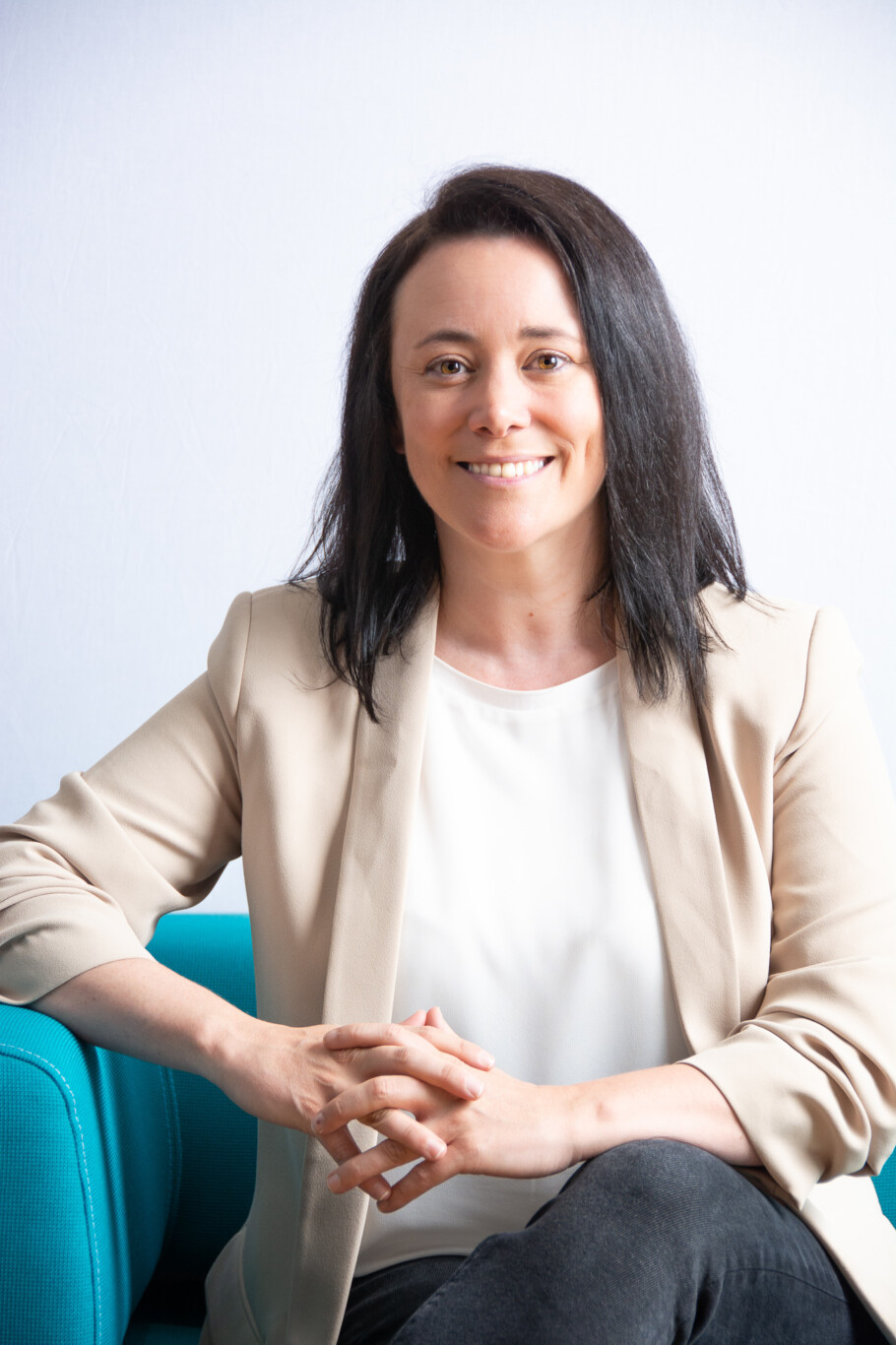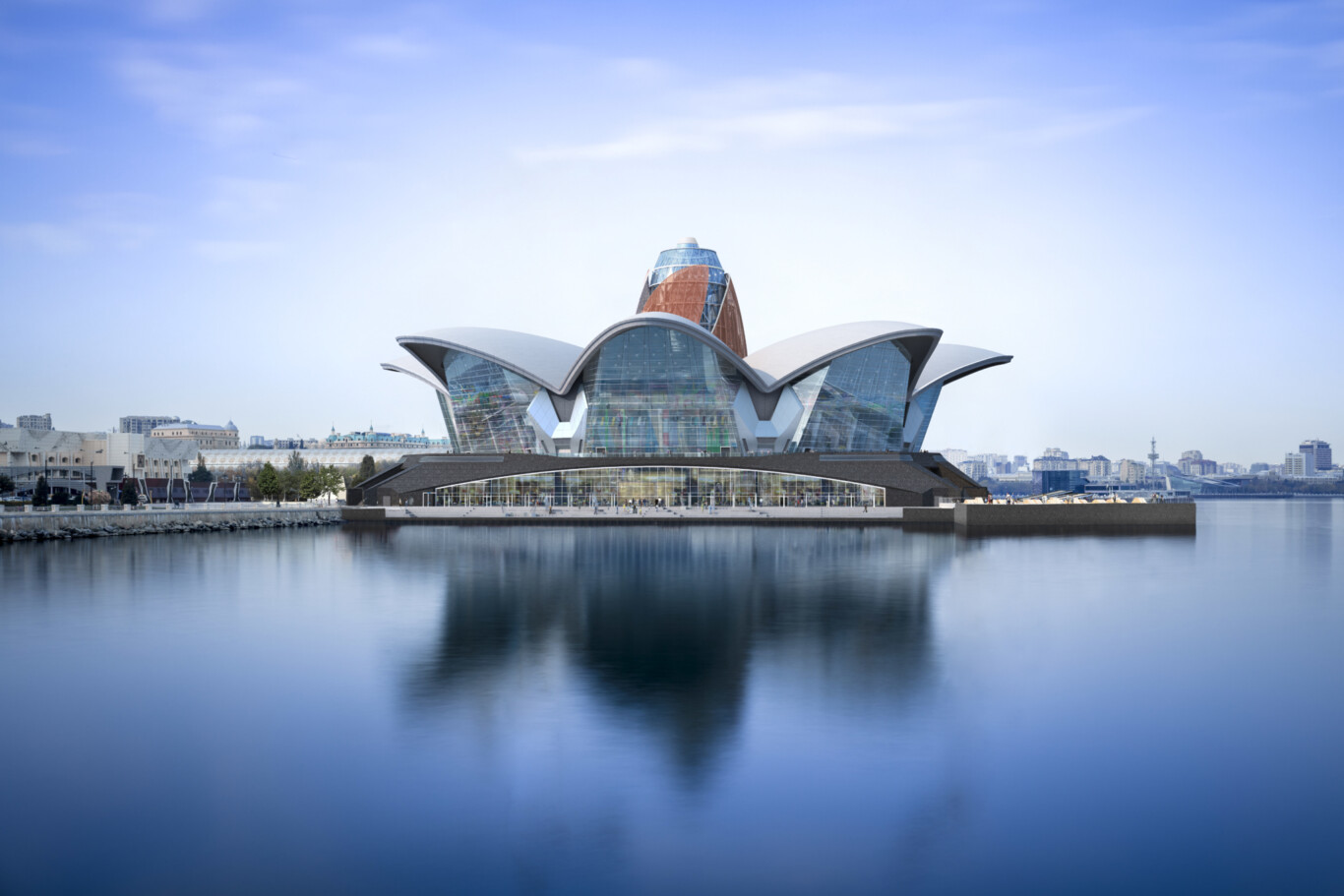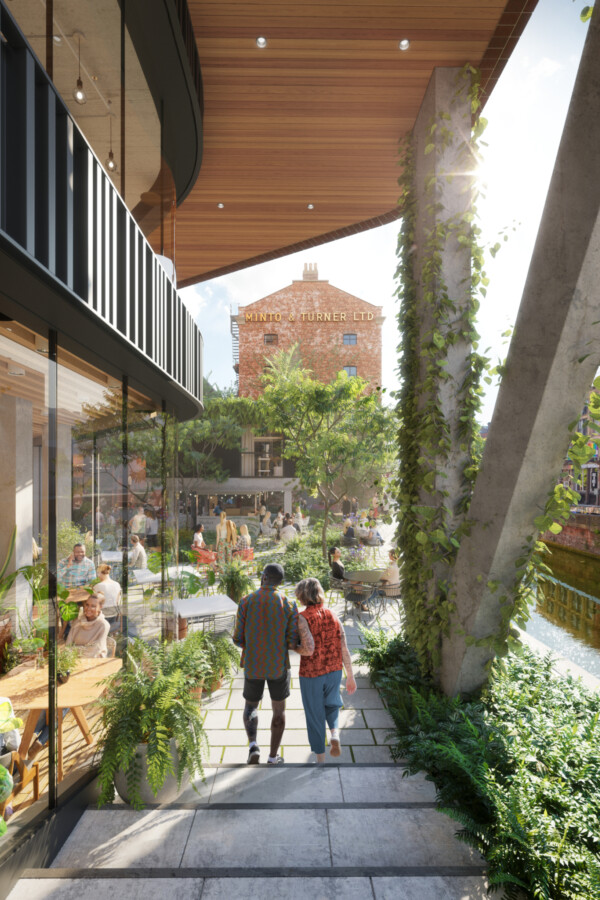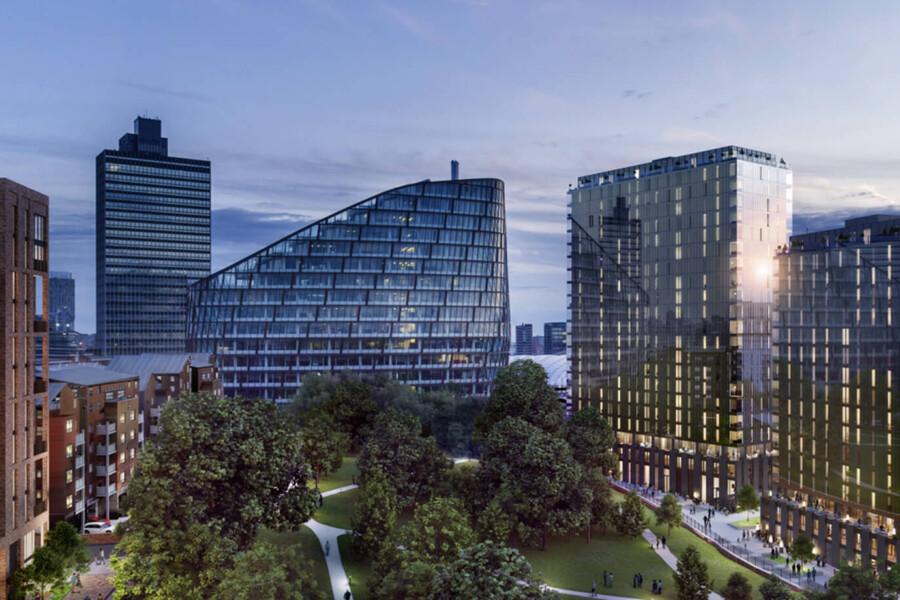
People Profile: Associate Director Rachel Rogerson on providing clients with solutions rather than problems
Associate Director Rachel Rogerson joined Chapman Taylor’s Manchester studio in 2006 and became an Associate Director in 2016. She is responsible for leading the UK Technical Group and coordinating ISO 14001 and 9001 in the Manchester studio. She has over 20 years’ experience, with a particular focus on the technical delivery and design management of major projects in the UK and internationally across a number of sectors. In this paper, Rachel talks about her career, her strong preparation ethos, and the design importance of the delivery process.
Tell us about your background and route into architecture.
I have always taken an interest in the environments around me, particularly how spaces are used and how things fit together technically, and I enjoy problem solving. For that reason, I always knew I wanted to be an architect and never considered any other career.
I had some early work experience in the industry and I really enjoyed it. I decided to study architecture in Hull at the University of Lincolnshire and Humberside (now the University of Lincoln). and I had great fun studying there.
I gained my year-out work experience in Leeds and went on to study for my master’s at the University of Leeds. I continued to work part-time whilst studying and this allowed me to extend my experience much more quickly than many of my peers – I was running projects by the time I was 22!
Much of my early work was in the social services sector, and I gained great satisfaction from being able to work on a variety of community buildings such as schools, libraries, one-stop centres, specialist children’s homes and local authority housing. The work was very design-focused, and I worked on all stages of the projects, from concept through to completion.
I stayed at my first practice for seven years, where I also became involved in a number of internal business initiatives. I was part of the company’s User Group, helping to develop technological solutions and document storage systems while trialling the use of CAD and 3D design tools. I was also very involved with business development.
What brought you to Chapman Taylor in 2006?
Chapman Taylor was actively recruiting for its Manchester studio at the time, specifically for the Northgate Chester project, and I was approached by a headhunter on the company’s behalf. I researched Chapman Taylor and I liked the company’s ethos. Up until then, the projects I had worked on had been of a much smaller scale, and I was attracted by the opportunity to work on the design and delivery of larger, more complex developments. The role was a step up and involved me leading on the detailed design of one of the key Northgate buildings whilst closely assisting Associate Director Andy Carroll overseeing the first phase of what was a major regeneration project.
I then went on to work as a key member of the MediaCityUK project team working all the way through to completion of the £500M first phase in 2010. I was involved in producing trade packages across the entire scheme as well as being heavily involved in the site coordination to ensure that the scheme’s very detailed technical requirements were met. All of this taught me a lot and provided great experience of developments on a much larger scale than anything I had known before.
Why did you come to focus on Delivery?
Throughout my career with Chapman Taylor, I have tended to focus much more on the detailed design and delivery stages of projects. This is a role that has evolved almost by accident as, throughout my career, projects have tended to come across my desk when there are problems to resolve or when something has gone wrong!
My design approach is to be organised and methodical and I enjoy the process of analysing problems and figuring out solutions. For this reason, I have found that I am able to develop very good relationships with our contractor clients, consultants and trade-contractors; I am very direct and like to get straight to the heart of resolving design and technical issues collaboratively, which I find is always well received.
Tell us about some of the other key projects on which you have worked.
I led the technical design and delivery team on the K Residence project in Baku, Azerbaijan, the first phase of which completed in August 2020. It was a very fast-paced project on a grand scale, using different construction methods from those used in the UK because Baku is a seismically active area. It was both an exciting and challenging project to work on and, due to the fast pace, it was essential to develop a strong relationship with our contractor client’s site delivery team to help drive the project forward and meet the client’s ambitious aspirations.
We went on to replicate this approach with the same collaborative team structure and design ethos for the design and delivery of the recently completed Deniz Mall for the same client. I have thrived on the challenge of working on international projects which bring the added demands of different time zones, long flights, late nights and sometimes unconventional methods of working!
During this period, I was promoted to Associate Director and have subsequently led our design team for the high-profile, 500-apartment, Kampus residential Build-to-Rent project in central Manchester, which has been instrumental in helping to consolidate Chapman Taylor’s growing reputation in the UK residential sector. Following the Grenfell disaster, and the resulting stricter regulations, we, and our client, were gratified that our risk-averse approach and strong technical expertise meant that minimal changes have been required to the façade design.
The concept involved some complex detailing, and our technical team has ensured that we are delivering our client’s vision to a high standard through continued design and technical reviews. This is a good example of how the design process continues during the technical delivery phase, and it is very gratifying to see the careful thought and design considerations now being realised as the concept has emerged as reality, with the construction nearing completion.
At Meadowside, another major residential scheme in Manchester, we were approached by the contractor, Westfields Construction to assume the role of executive architect for Plots 2 and 3, which involves two residential towers being developed by Far East Consortium. This is the first time we have worked with both Westfields and FEC and, through robust design detailing, organisational efficiency and good communication, we have developed an excellent relationship with both parties, which is resulting in further opportunities on other projects.
A direct spin-off from this has been our work with DEX Construction, who invited us to work as part of their team on Plot 5 of their Meadowside development. This new business is a direct result of the excellent reputation we have built and is testament to the way we deliver our design services. I am a strong believer that this is one of our most effective forms of business development - to do an excellent job - and I encourage this ethos throughout our teams.
In addition to the residential projects noted above, I am currently working on a project in the educational sector, Manchester Metropolitan University’s Institute of Sport, which will be a state-of-the-art home for the university’s Department of Sport and Exercise Sciences and the delivery of two new hotels at Manchester Airport.
How important is the design element of the delivery process?
There is sometimes a bit of a misunderstanding in our profession about the importance of the technical delivery stages of a project, with a misconception that design “stops at Work Stage 3”. A strong design concept can often be let down by poor and insensitive technical design detailing. Equally, a concept design can often be enhanced if it is well detailed and materials are carefully selected.
The detailed design elements of the delivery phase are therefore crucial, in my view, and it is important we continue to conduct design reviews throughout these key stages of the design process. We need to be prepared to constantly interrogate and question our designs and look for ways to improve them, both aesthetically and from a buildability point of view. To my mind, this is one of the areas where our use of BIM and the ability to review and test our detailing in three dimensions has greatly improved the way we now work.
It is important to take the whole design team on this journey and to be able to explain and illustrate the reasons we are developing our details in a particular way. On the Kampus project, for example, we created 3D physical models to mock up and test the design detailing and presented these to our client. On Meadowside, we commissioned a test jig for the shadowbox glazing to test both the colours and finishes, to ensure we were delivering the desired aesthetic of the concept design. We were able to compare anodised materials with PPC finishes and demonstrate how the differing materiality would work and appear. This provided the team with the confidence to organise a comparative mock-up to demonstrate to our client and the contractor that a better design solution was achievable.
You lead Chapman Taylor’s UK Technical Group. Tell us about that role.
Last year, I was asked by the UK Board to take on the leadership and reform of Chapman Taylor’s Technical Group, with a remit to unify our processes and strengthen our technical design ethos across our three UK studios. Working closely with UK Board Director Andy Hudson, our strategy has been to create a central UK Technical Steering Group to guide and supplement each of the three UK studios’ individual technical teams. This involves a monthly coordination meeting with the appointed technical coordinators from each of the UK studios to ensure we are taking a consistent approach to knowledge sharing and providing technical advice.
Our aim is to ensure that the needs of the overall UK business are the focus of any decisions and actions we take rather than the individual studios taking a different approach to resolving technical-related matters. This also allows us to draw on the most recent technical construction experience from each studio to make sure we are continuing to provide consistent and good quality advice to our clients.
The reorganisation is proving to be a positive step forward, with the UK Technical Group communicating effectively across the UK business in support of our drive for continuous improvement. We are developing key strategies for the implementation of current and new company policies, integration of new technologies, reviews of regulatory changes and their impact on the business together with audits of compliance with the company’s ISO 9001 / 14001 QA, environmental and technical standards.
As a group, we are endeavouring to ensure that the business pursues the highest and most appropriate industry standards, with easy access to the most up-to-date knowledge available. Our project health checks (which form part of our QA procedures) provide a great source of knowledge and experience to our project teams, with experts who have carried out extensive research of particular technical topics able to provide constructive technical reviews with the benefit of a fresh pairs of eyes.
We’ve recently introduced a process of electronic snagging and site inspections using the PlanRadar app on our architects’ mobile phones, to replace the traditional process of taking photographs and then having to transfer them to another application and format in order to issue a report. This is saving valuable time and money while also ensuring important information is being stored more efficiently – a good example of using technology to support our continuous improvement initiatives. This is particularly important, post-Grenfell, and reflects the industry’s move towards a “Golden Thread” of information being required on all projects.
A relatively new design service we have been developing is our due diligence and peer review of projects for our clients. I have found my methodical design approach and analytical skills have been invaluable when leading our due diligence process on a number of delivery projects.
In the past, we have often found common issues in the transition from the concept design to the technical delivery stages of projects, often due to a general lack of understanding of the regulations or specific sector-related or technical elements of design. As part of our due diligence process, we undertake a review of the concept design or employer’s requirements against current regulations and legislation to assess, record and minimise any potential design or construction risks before the projects move forward to the technical construction stages. This service has been well received, particularly by our contractor clients, and is proving to be a successful tool in support of both our design and business development initiatives.
Has your philosophy changed over the years?
As I have progressed in my career, my outlook has evolved, with a strong emphasis now on helping to mentor and develop the skills of the people around me, especially the younger generation. I am keen to transfer the skills that I have learned and replicate the support I have experienced throughout my time with Chapman Taylor to help create a stronger design offer for both the present and the future.
I believe it is very important for us to work collaboratively as one UK-wide team, with a focus on sharing ideas and exchanging knowledge to continue to develop the practice’s design and delivery capabilities. To achieve this, it is good that we are encouraged to challenge existing orthodoxies and able to propose new ways of doing things if we believe there is a better way of doing them.
This ethos informs my approach to mentoring as well as my approach to business development and research and development within the Technical Group.
What is it about our approach that brings clients back to Chapman Taylor?
Our strong design and delivery focus, combined with our ability to develop positive relationships with local authorities' Planning and Building Control teams, as well as being prepared to challenge other consultants’ preconceptions by knowing the regulations in depth, are all key aspects of what differentiates the design services we offer.
What our clients want, whether developers or contractors, is for us to make their lives easier by achieving what they need. We should never go to a client with a problem unless we already have a solution or a series of possible solutions to choose from. I see my role as helping to remove the stress and worry from problem solving through a proactive approach which always offers a solution.
This is not an entirely selfless service – the same clients, when confronted with complex issues or problems in future, will know that they can come to us for possible solutions. I think that this is something of a calling card for Chapman Taylor – we will always strive to make our clients’ lives easier.







